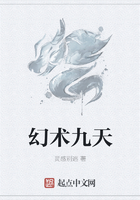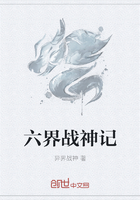Every second of every day, you manufacture 10 million new red blood cells. Add to this stream a large dose of white blood cells, millions of platelets and an assortment of nutrients. How does the body coordinate these components into the finely blended mixture we call blood?
Close to half your blood is made up of red cells, white cells and platelets, all of which incubate① in the bones. Each of these life-sustaining agents② begins as a stem cell, a sort of hematological embryo③ that idles in the marrow until ordered to develop into one of the three discrete blood cell types.
Red cells ferry oxygen through out the body. Alerted by a chemical alarm from the kidneys, which continuously monitor the blood for dropping oxygen levels, a hormone called erythropoietin④ directs the marrow to build a fresh supply of red cells.
White blood cells protect the body from disease and infection by ingesting or ousting microscopic intruders. They are found in a number of forms and produced in number of ways. For example, a hormone⑤ called granulopoietin signals the marrow to produce white cells of the disease-fighting variety; foreign substances called antigens trigger the manufacture of others that specialize in battling infection. As a precaution, the marrow houses a stand by force of fully developed white cells. So vigilant is this reserve platoon that it may interpret even routine exercise as a sign of potential bodily injury and flood the system to tend to illusory wounds.
For legitimate emergencies, the body also keeps on hand a supply of platelets, disk-shaped bodies whose job is to facilitate clotting. Platelets mature from stem cells when ever the body nourishes them with the hormone thrombopoietin⑥. Only a bit of the hormone is manufactured at a time, which prevents platelet production from running muck. When the thrombopoietin is totally consumed, the platelet population stops growing.
Red cells, white cells and platelets are transported in the body by plasma, a thin liquid that makes up the other half of the blood. Though complex, plasma is only 10 percent organic substances. The remainder is water, a component that must always be present in precise concentrations. Should the blood become either too diluted or too viscous, the kidneys retain or excrete surplus water until the proper balance is reached.
A single blood cell will travel through its plasma medium for as much as 120 days until it is ultimately washed ashore in the spleen⑦, the junkyard of the circulatory system. Although trillions of cells meet this fate daily, all are replaced as effortlessly as they are discarded. In fact, the cellular contents of the blood are entirely destroyed and renewed 300 times over the course of an 80-year life span. But despite such upheaval, the river of life still flows on.
① incubatevt. 酝酿;逐渐发展;孵卵,孵化;温育;培养
② agentn. 【化】剂;中介,媒介;代理人;代理商;中介人
③ embryon. 胚芽;胚胎;初期 adj. 胚芽的;胎儿的
④ erythropoietinn. 促红细胞生成素
⑤ hormonen. 【生】荷尔蒙
⑥ thrombopoietinn. 血小板生成素
⑦ spleenn. 【解】脾脏;坏脾气;怒气;恶意
人体造血的奥秘
每一天的每一秒钟,你的身体都在制造出一千万个新的红血球,汇入其中的还有大量白血球、数以万计的血小板和多种多样的营养素。人体是怎样把这些成分调配成我们称之为血液的组合得很精细的混合物的呢?
人的血液将近一半是由红血球、白血球和血小板组成的。所有这些成分都是在骨骼中孕育出来的。这三种维持生命的要素都起源于干细胞。干细胞是血液的胚胎,它们在骨髓中处于闲置状态,直到奉命分别发育成三种不同类型的血细胞。
红血球将氧气运送到全身。当不断监测血液的肾脏发现含氧量下降并以化学方式发出警报时,一种名叫红血球生成素的荷尔蒙便命令骨髓制造一批新的红血球。
白血球能吞噬和清除用显微镜才能看到的微小入侵者,从而保护人体免于患病和感染。白血球有多种形态,由多种方式生成。例如,抵御各种疾病的白血球是由一种名叫促粒细胞生成素的激素发信号由骨髓生成的,而制造专门抗感染的白血球则是由一些名叫抗原的外来物质促成的。为了预防不测,骨髓中还储存着已经完全成熟的白血球后备军。这支后备军保持着高度警惕性,甚至会把日常身体锻炼也当作人体可能受伤的信号,因而涌入循环系统去照应假想中的伤口。
为了应付真正的紧急情况,人体内还存有随时可以动用的血小板。血小板形似圆盘,其职责是促使血液凝固。每当人体用促血小板生成素这种激素去滋养干细胞时,干细胞就成熟为血小板。人体每次只制造少量这种激素,以免血小板毫无节制地生成。当促血小板生
成素完全耗尽时,血小板的数量便不再增加。
红血球、白血球和血小板在体内是靠血浆输送的。血浆是一种稀薄液体,血液的另一半就是由它构成的。血浆的成分虽然复杂,但只含有百分之十的有机物,其余部分是水。血液中的水分必须总是保持一定的浓度。倘若血液变得太稠或太稀,肾脏就要保存水分或排除多余的水分,直到恢复适当的平衡。
单个的血球依靠血浆可在体内运行的时间可达120天,最后,它被冲到循环系统的废弃物堆积场——脾脏。虽然每天有无数血球遭此厄运,但是新的血球很轻易地就完全取代了它们,就像它们被轻易地抛弃掉一样。事实上,在人长达80岁的一生中,血液中的细胞要被完全破坏和更新300次,不过,虽然历尽如此沧桑巨变,生命之河依然奔腾向前。














